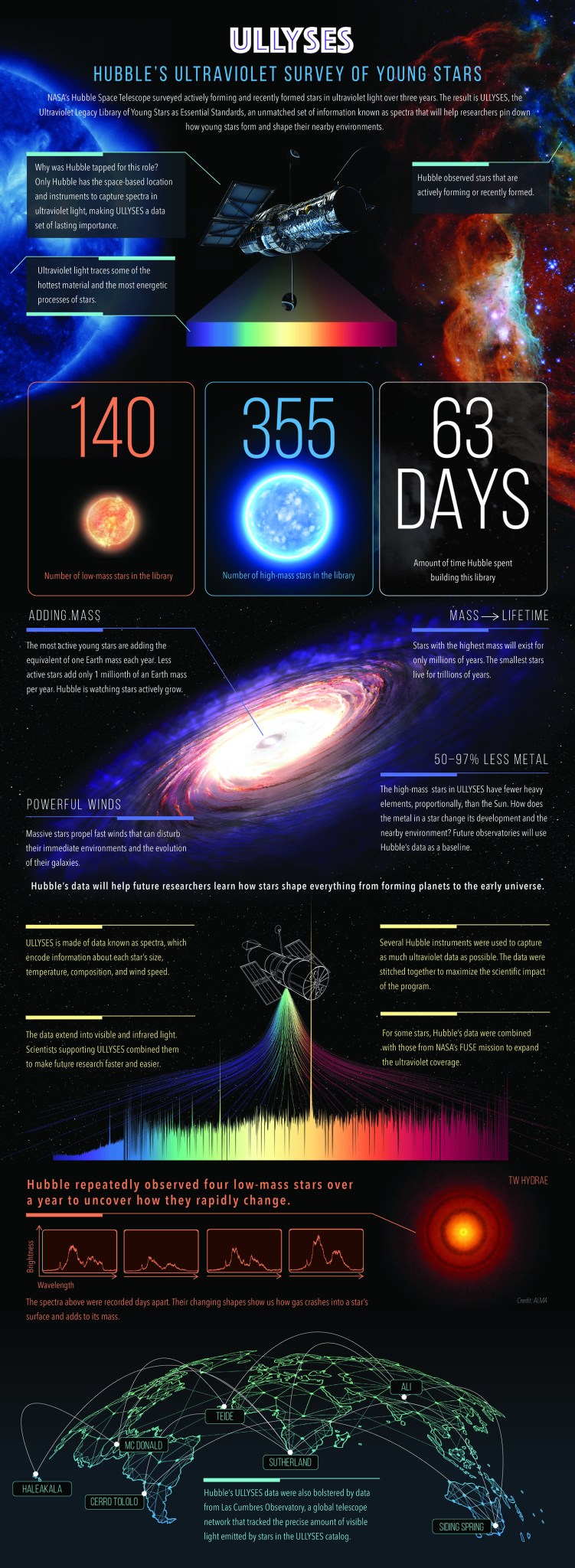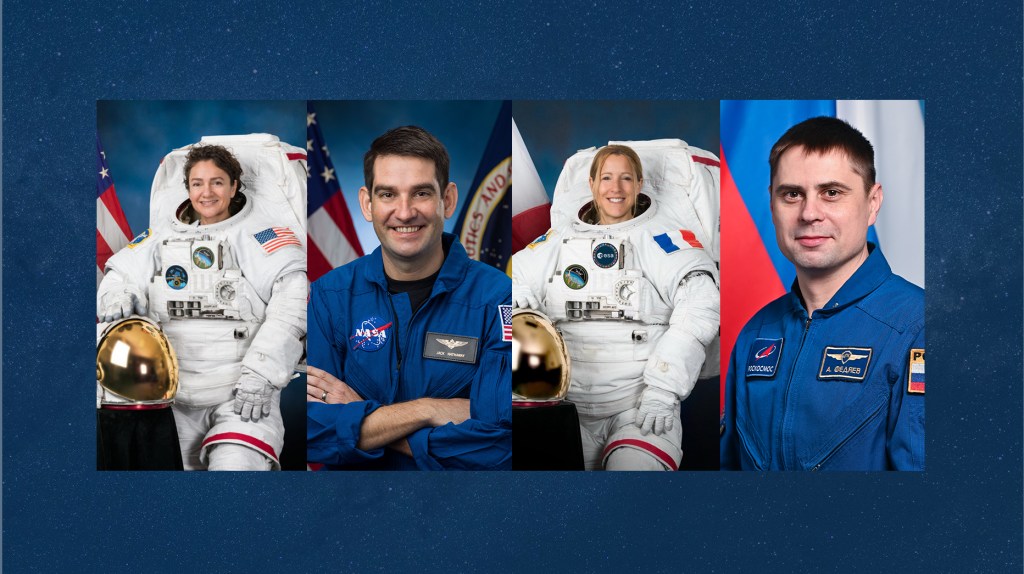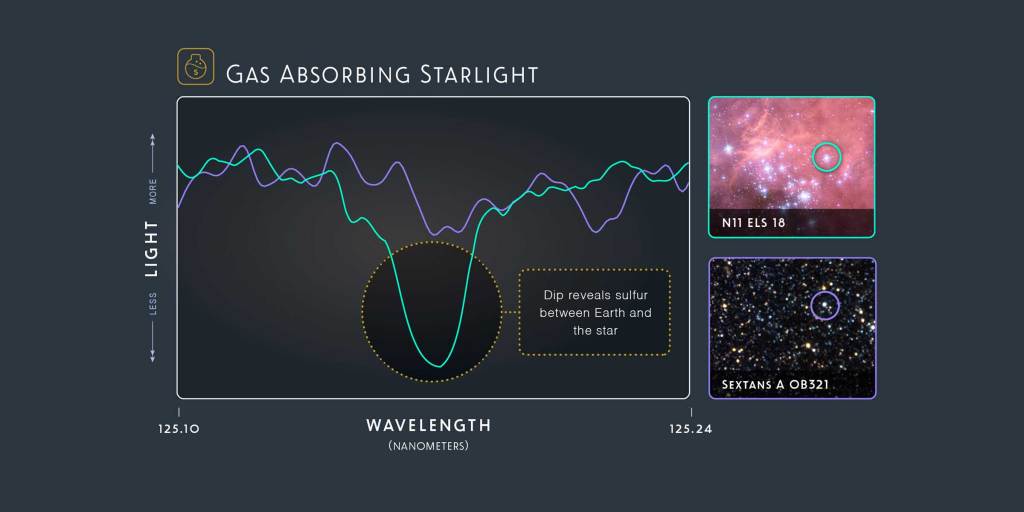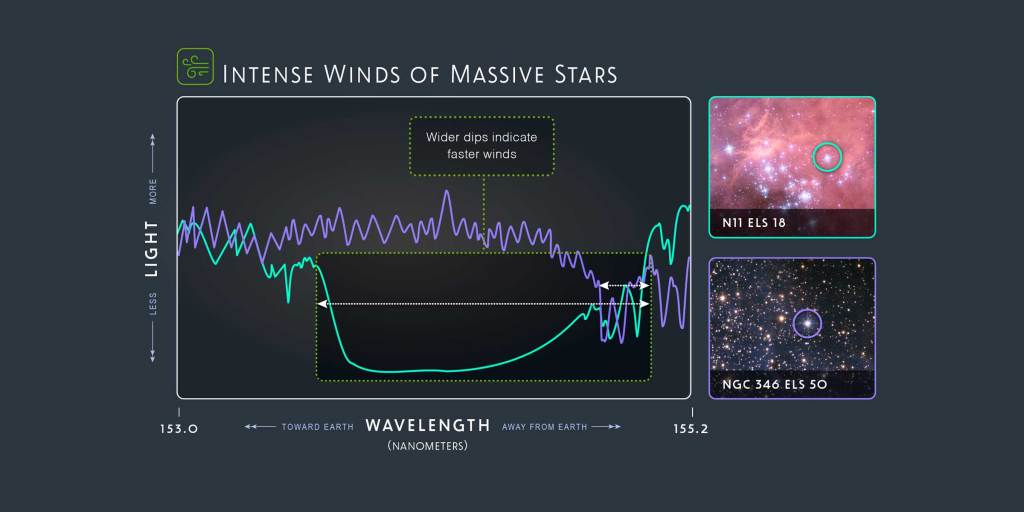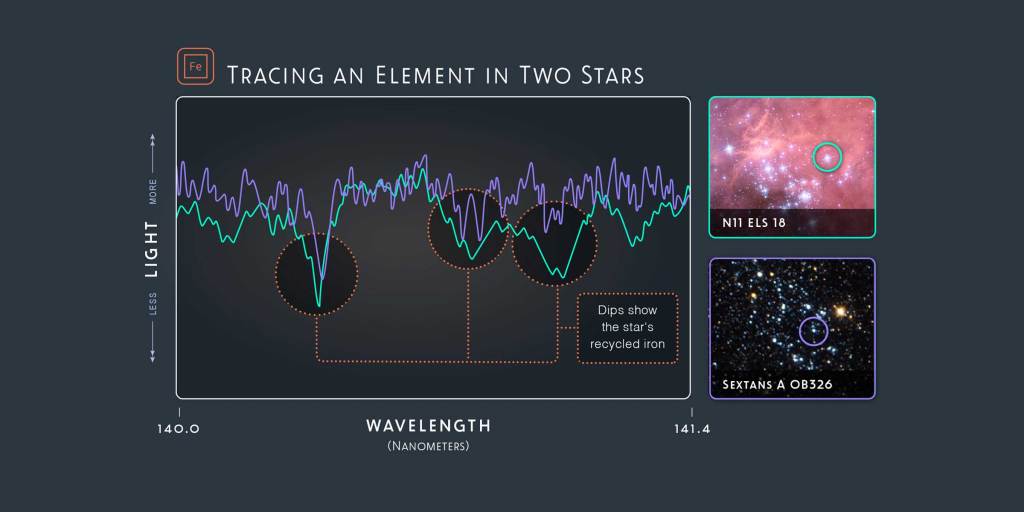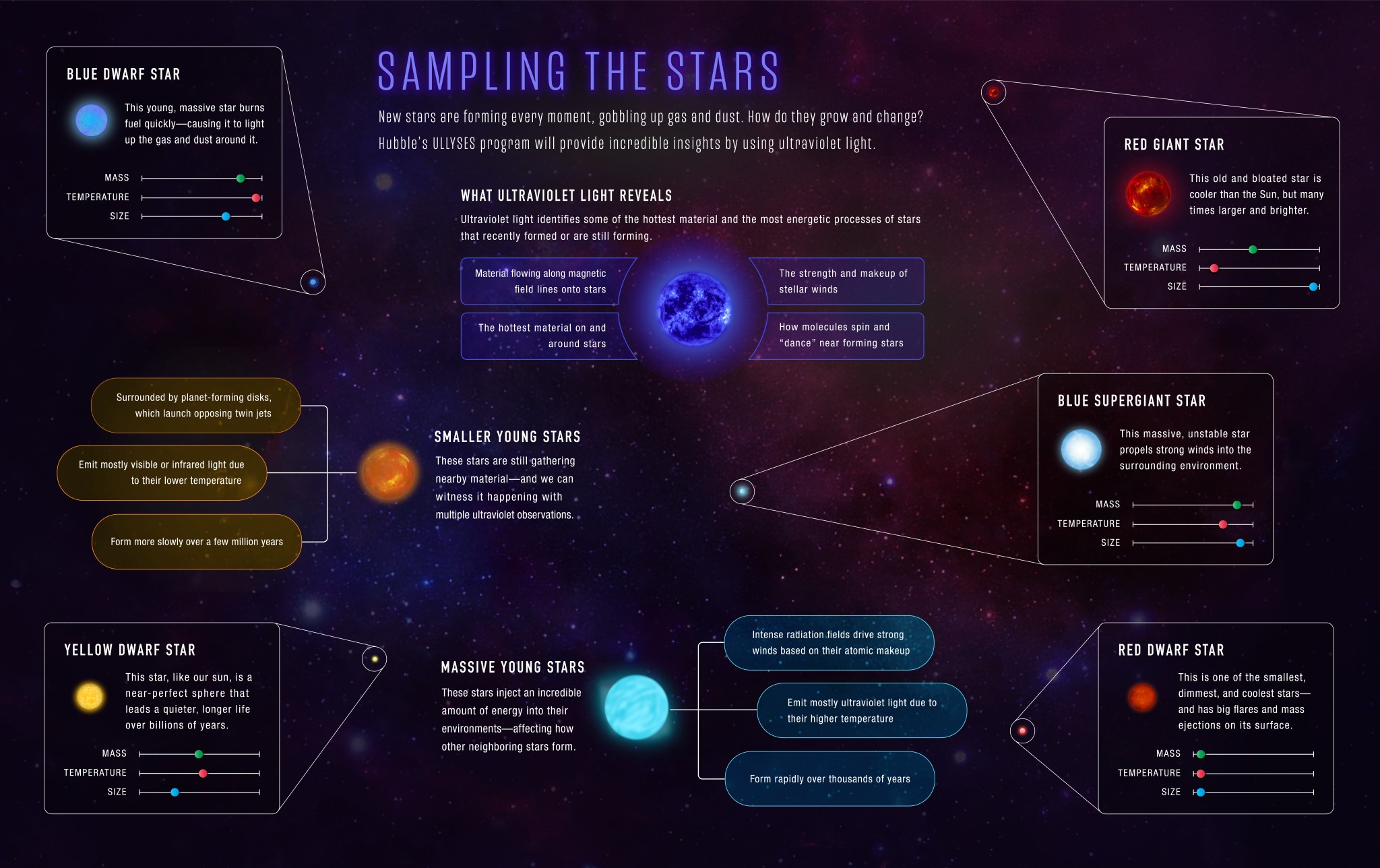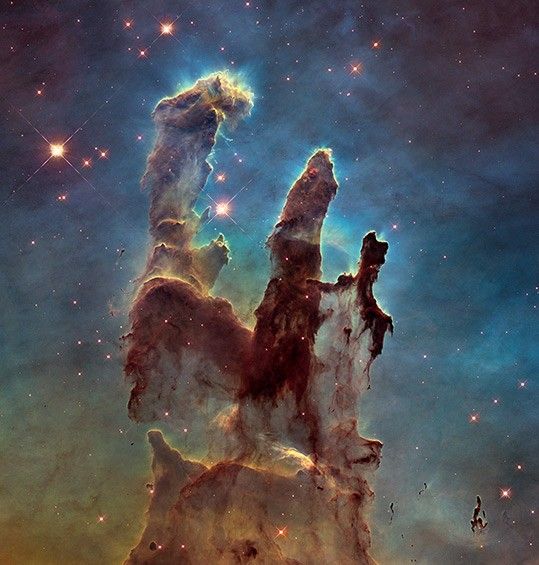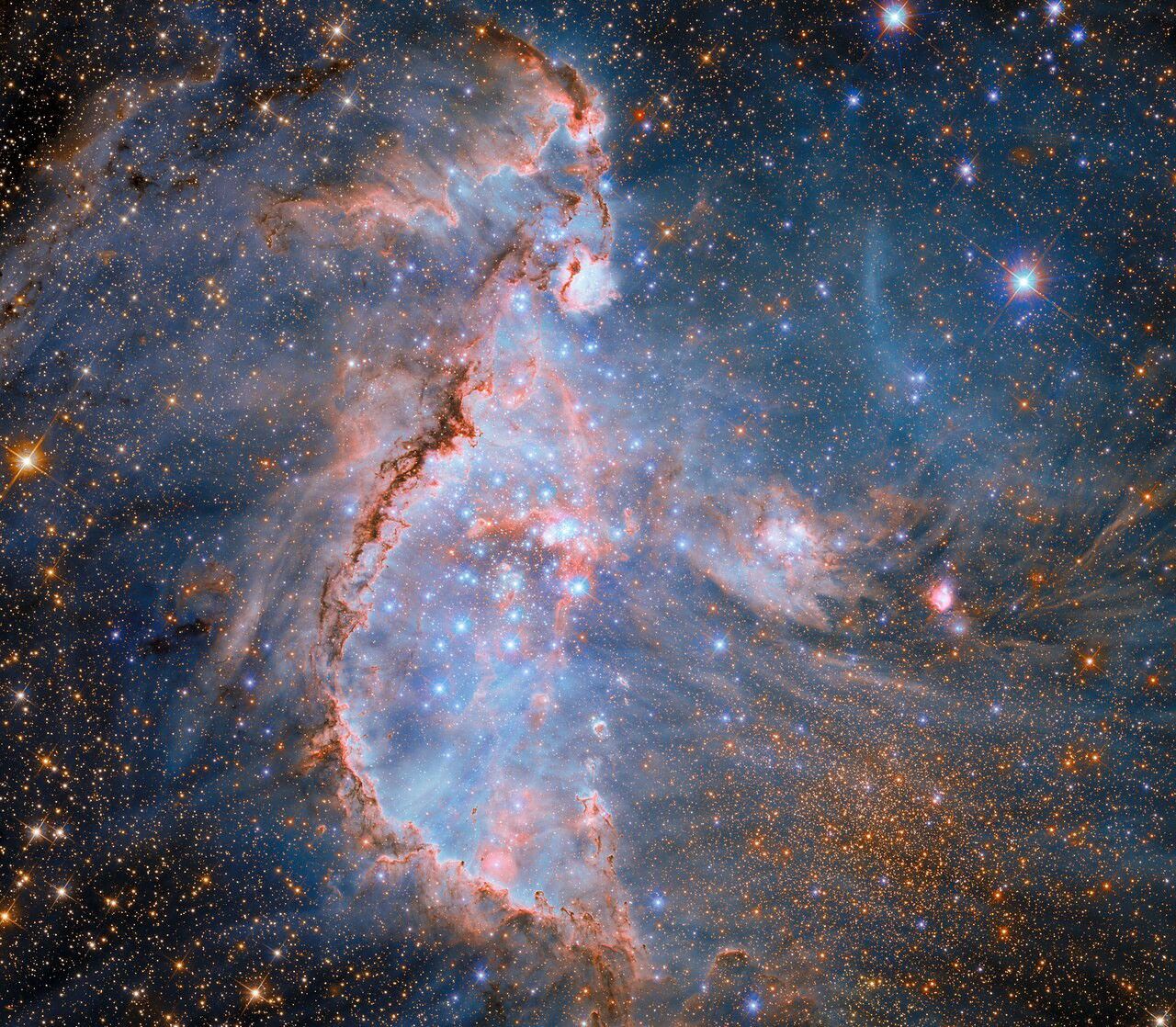Hubble Science
ULLYSES
The Hubble Space Telescope undertook an extensive three-year program, known as the Ultraviolet Legacy Library of Young Stars as Essential Standards (ULLYSES), to observe young stars still gathering material and those that have recently formed.
Detailing the Lives of Young Stars
For centuries, astronomers have studied the stars, gathering information about their precise positions and compositions to learn how they form. But it wasn’t until telescopes were launched into space that we could begin to capture some of the most important information – which is delivered by ultraviolet light.
Ultraviolet emissions highlight part of the hottest material and the most energetic processes of stars that recently formed or are still forming. Only the Hubble Space Telescope is currently capable of making high-resolution ultraviolet light observations, which is why it undertook an extensive three-year program, known as Hubble’s Ultraviolet Legacy Library of Young Stars as Essential Standards (ULLYSES), to observe a set of high- and low-mass young stars.
Hubble built this dataset not with images, but by gathering spectra, which spread light into its component wavelengths and reveal details about each star’s size, temperature, speed, distance and composition. These data help astronomers learn how stars form and what their compositions are just after forming.
Researchers will also be able to trace material as it follows magnetic fields onto young stars, measure the strength and makeup of their stellar winds, and learn how the stars impact their environments as or soon after they form.
Examining the Lives of Young Stars in Unprecedented Detail
Hubble’s ULLYSES program observed approximately 220 stars in 10 star-forming regions in our Milky Way galaxy and in nearby low-metallicity dwarf galaxies. Its targets are a mix of high- and low-mass young stars.
The young high-mass stars are extremely active. These stars inject an amazing amount of energy into their surrounding environments through ultraviolet radiation and stellar winds, which impact local star formation. Their activity is matched by how long they take to form: Young high-mass stars form rapidly over thousands of years. Hubble’s observations will help researchers learn more about how their makeup, specifically their metallicities, control the strengths of the winds they emit as well as how easily these stars can eject matter.
In contrast, young low-mass stars can take a few million years to form. Hubble observed four of these young low-mass stars repeatedly, tracing how they gather material and emit ultraviolet radiation, and change over short timescales. The amount of matter around these stars is significant – planets may be forming among the disk of gas and dust that surround each star. The observatory’s ultraviolet spectra show where the stars most actively collected new material and how they impacted their immediate environments, including any planets that may be forming within each star’s disk. Researchers will also use Hubble’s data to answer why these young low-mass stars launch opposing jets and how those jets inject energy into their environments.
Stimulating Research for Decades to Come
Hubble’s ULLYSES program was built by and for the research community, and its data were quickly released following each set of observations. The goal is for researchers around the world to download and analyze them, publishing new breakthroughs about how young stars form.
Astronomers may also go on to compare this ultraviolet data with complementary data – from radio and infrared to visible and X-rays – delivered by a range of observatories that are both on the ground and in space. The program’s overarching goal is to provide a definitive data set about the first 10 million years of stellar evolution and help researchers understand the complexity of ultraviolet spectra. The program is a library that researchers will continue to reference for decades to come. More fully understanding the formation and lives of young stars has connections to many other areas in astronomy, including galaxy formation and evolution, the mechanics and mass loss of supernovas, how stars’ environments impact planet formation, and how their emissions may play a role in the makeup of the interstellar medium, the gas and dust between stars in a galaxy. Hubble’s ULLYSES data applications are practically endless – and will influence our understanding of the universe in ways we cannot yet predict.
